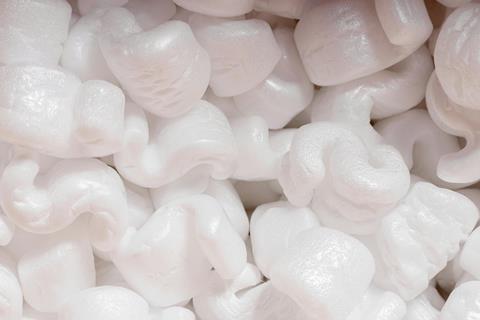Waste plastics come in many forms. While some waste plastics are easily recyclable, others can pose significant challenges.

“Polystyrene is one such problem material,” says Christoph Wittmann, Professor of Biotechnology at Saarland University, who has dedicated his extensive research career to exploring environmentally friendly ways to dispose of or recycle problematic plastics.
Thanks to his team’s work, polystyrene—best known in its extruded foamed form as Styrofoam—may soon shed its problematic reputation and emerge as a highly sought-after raw material for the chemical industry.
READ MORE: Bacteria rewire digestive systems to turn plant waste into power
READ MORE: Scientists engineer promising microorganism to produce isoprenol - a step towards greener jet fuel
Globally, a staggering 20 million tonnes of polystyrene waste are generated each year, with only a small fraction currently being recycled. But if Christoph Wittmann has his way, this could soon be a thing of the past.
Working in collaboration with polymer chemists from Professor Markus Gallei’s research group, materials scientists from the Leibniz Institute for New Materials (INM) in Saarbrücken, and partners in Dortmund and Vienna, the Saarland biotechnologist has succeeded in getting bacteria to break down the molecular building blocks of polystyrene and convert them into useful chemicals.
These molecular building blocks are first extracted from the waste polystyrene using an energy-efficient process, laying the groundwork for subsequent microbial recycling.
Fine-tuning metabolism
Simple enough in theory. But getting the bacterium Pseudomonas putida to metabolize these substrates to yield useful products required years of meticulous lab work in which the bacterium’s metabolism was fine-tuned so that it not only developed a taste for polystyrene (which few bacteria naturally have) but also yielded the desired metabolites.
One such metabolic product is muconic acid, which can then be chemically transformed into adipic acid and hexamethylenediamine. These two compounds each contain a chain of six carbon atoms. In adipic acid, the chain is capped with two carboxylic acid groups—one at each end. In hexamethylenediamine, the same carbon backbone is terminated by two amino groups.
Chemists will immediately recognize these as the key components used to manufacture nylon—a polymer of huge commercial importance. Nylon is found in countless everyday items, from nylon stockings to carpets, from car seats to cable ties and from kitchen utensils to wall plugs.
By transforming hard-to-recycle polystyrene into a sought-after feedstock for high-quality technical and high-performance polymers, the biological ‘upcycling’ that has been developed in Saarbrücken offers a clear advantage over conventional recycling.
New possibilities
The process developed in Saarbrücken, which was made possible through funding from the EU project ‘Repurpose’ (https://www.repurposeproject.eu/), has opened up entirely new possibilities for the chemical industry as it enables millions of tonnes of polystyrene waste to be kept within the material cycle and repurposed into valuable raw materials.
”The real breakthrough is that our research colleagues at INM, led by Professor Aránzazu del Campo, were able to demonstrate that the products yielded by our method have identical properties to those made from virgin petroleum-based sources,” says Wittmann.
In other words, the polymers derived from recycled polystyrene are just as durable and resilient as those newly synthesized polymers made using conventional petroleum feedstocks.
Collaboration location
These important findings were made possible by a university campus whose compact layout and integrated research infrastructure enables seamless collaboration across disciplines.
”Collaboration here is a lot easier than at many other university locations,” says Wittmann.
”I can easily meet up with colleagues from the chemistry department or the Leibniz Institute for a coffee or we can discuss a project over lunch. That’s one of the big benefits at Saarland University,” says Professor Wittmann, who points out that at other universities, research groups are often spread across different parts of the city, making collaboration more difficult.
Today, no research scientist can succeed in isolation—especially in fields like his. ”Progress in sustainability depends on collaboration,” Wittmann explains. “It’s not something any one researcher can achieve on their own.”
Topics
- adipic acid
- Aránzazu del Campo
- Bacteria
- Christoph Wittmann
- Climate Action
- Healthy Land
- hexamethylenediamine
- Innovation News
- Leibniz Institute for New Materials
- Markus Gallei
- Microbial Biotechnology
- muconic acid
- nylon
- Plastic degradation
- polystyrene
- Pseudomonas putida
- Saarland University
- UK & Rest of Europe
- Waste Management







No comments yet